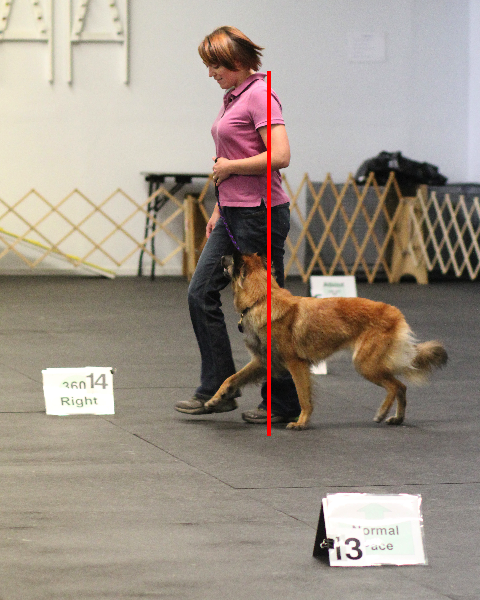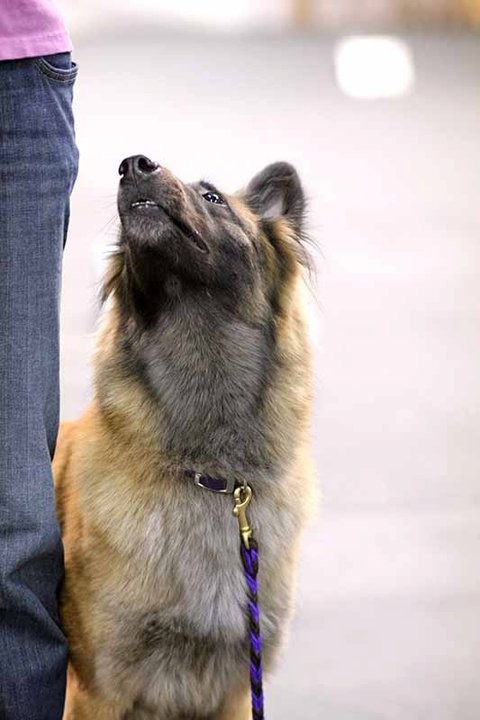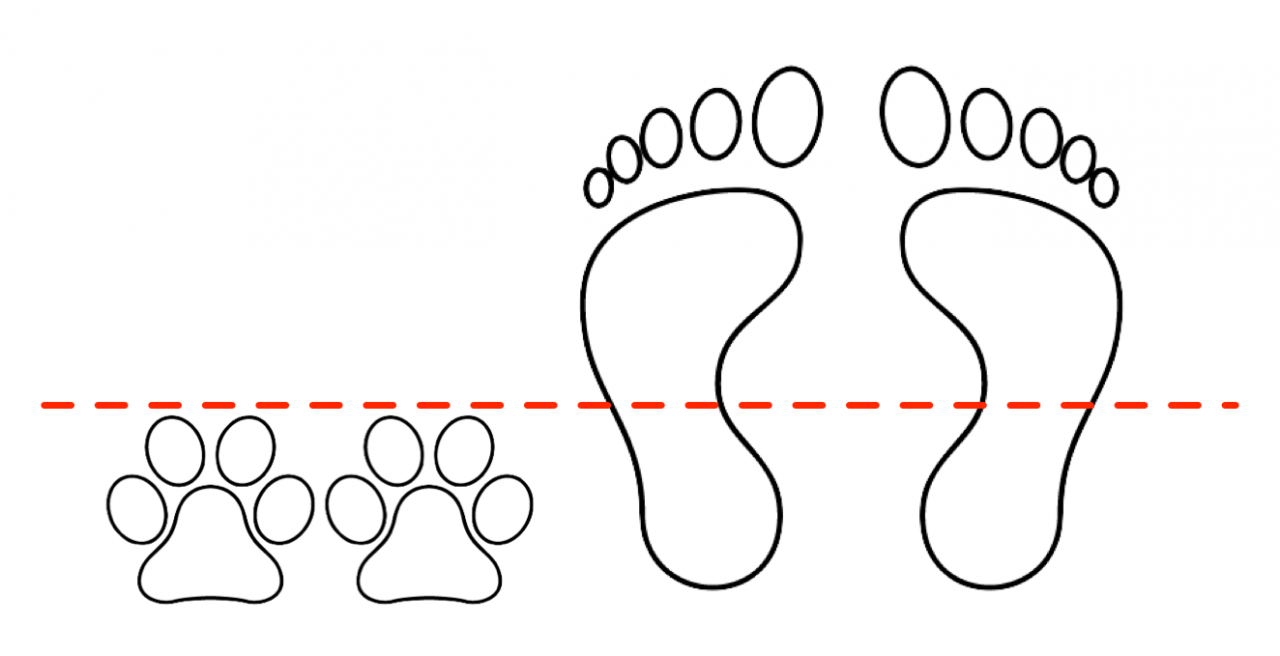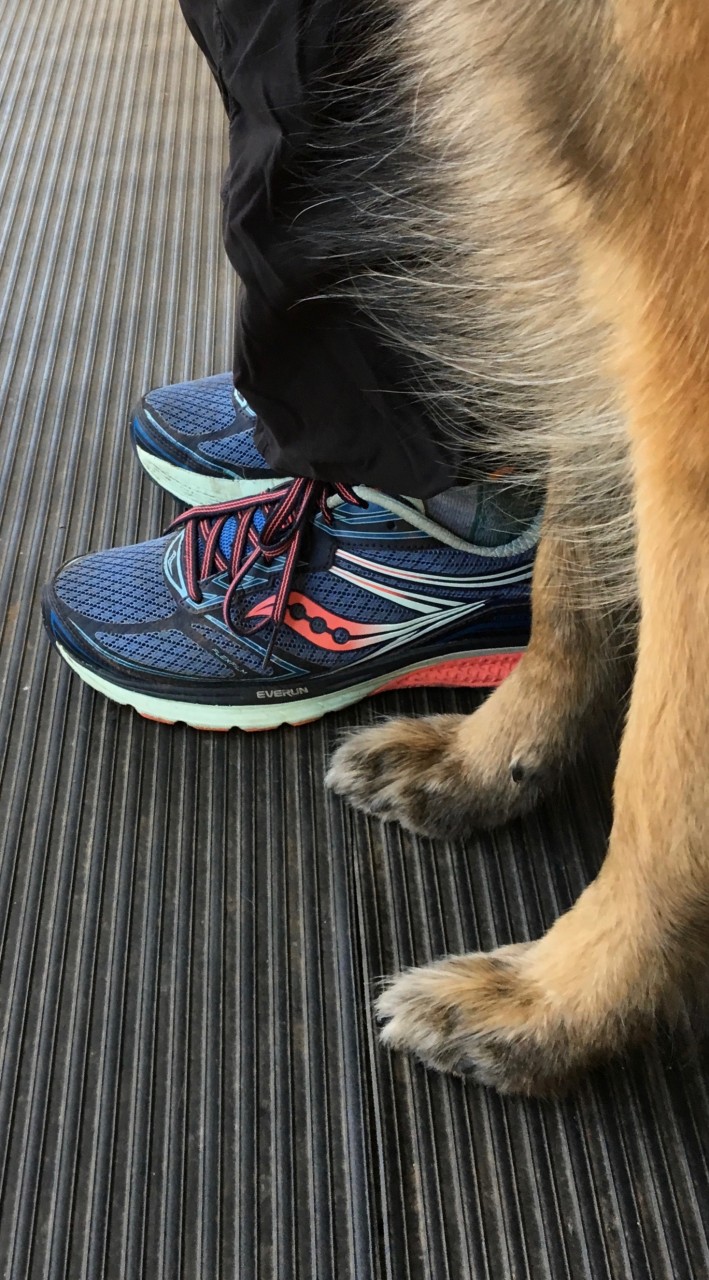Defining “Perfect” Heel Position
When I first got started competing in obedience, I really had no idea what heel position meant. I mean, I vaguely knew the dog should walk at your left side and sit when you stopped walking. I could tell that much from watching other teams heeling, even with my uneducated eye.
It turns out that perfect heeling is a somewhat subjective thing. Everyone has their own aesthetic sense of what "perfect" means - their own picture in their mind of what perfect heeling should look like. Heeling was one of those things where I knew it when I saw it but I couldn't really tell you how to define it. Like art, music, fancy food, and other complex things, I could tell you when I liked what I saw, but I had no idea how to identify what made it great... and worse, I had no idea how to reproduce it.
Without a really clear picture of exactly where heel position should be, I was unable to set clear criteria in my training. Vague criteria leads to vague behavior... and frustrated dogs and handlers.
I've also discovered that there is a critical difference between being able to identify if a dog in good heel position from across the room, and being able to identify your own dog's position at your side in real time. Since that's where the training happens, it's kind of a big deal!
Defining Heel Position
Different competitive organizations have slightly different definitions in the rulebook for heel position, but there is more than enough overlap for our purposes.
To define heel position, we need to look at several variables. In general, your dog should move at your left side, with his spine straight and parallel to your direction of movement. More specifically, if you draw an invisible line from your shoulder through your hip to your heel, that line should fall between the back of your dog's ear and the front of his shoulder. Depending on the length of your dog's neck, you could have a fair bit of wiggle room to play with!
We must also consider the closeness factor, and here we also have a little room for interpretation.
In the AKC rulebook, they tell us the dog should be as close as possible without impeding the forward movement of the handler. This can be interpreted as being so close that you can't see any daylight between your leg and your dog, but it can also mean that your dog leaves a few inches of space, and that can be correct also.
Train for what looks good to you, don't worry about your friends, other competitors, or even the judge. Especially the judge! Judges, being human, all have slightly different pictures in their minds of exactly what "perfect" heeling should look like. Some judges like to see a little daylight between dog and handler, and other appreciate a really tight position. It's impossible to please everyone, so just train to please yourself and you and your dog will be much happier!
In my experience, the most important thing to shoot for, in both the forward/backward element and the closeness element, is consistency. Your dog could be 2 inches forward or back, could be quite close or with a little space, and as long as he maintains that position relative to your body consistently through the heeling pattern, you're golden.
Setting Clear Criteria for Heel Position
Of course, that's exactly where having really clear, black and white criteria comes in. You need to pick a specific distance from a specific landmark on your body to train for, because that is what builds that consistency. You and your dog must be in agreement on exactly what counts and what doesn't. Find a way to define it in your head, so that you don't catch yourself wondering "is this close enough?" in the middle of a training session. By the time you ponder that question, the opportunity to reinforce or reset has passed!
Here is what works for me:
The clearest visualization for me is to train for my dog's front paws to be even with my ankles. So, if there is an invisible line drawn across both our feet, the line will touch the front of my shins and the dog's feet land just behind that line.
Viewed from the side or above, my dog's toes should be behind the laces on my sneakers.
Of course, for most of my dogs, I can't really see them when they are in perfect heel position (and I'm in perfect posture). In fact, one of the ways I can tell if my border terrier is in heel position is that I can't see him at all, because I know that when I CAN see him he's not in position! So in training, using props like platforms and targets to ensure his paws are just where I want them to be is very helpful in building a reinforcement history for the correct alignment.
What's extra cool is that I have noticed that, with practice (a LOT of practice), I am getting better and better at identifying when my dog is where I want him to be, even when I can't directly visualize him. Certainly, I can use mirrors, but even more than that I can extrapolate where he is by our shadows, flickers of scruff that appear under my armpit as we walk, and even feeling fur brush my calf. With practice, you too can learn to perceive your dog's position with only those few data points. Much like (if you're parent) you can tell when your child is doing something they shouldn't just by the sound of the cabinets in the kitchen.)
By accepting you will be accessing a service provided by a third-party external to https://www.fenzidogsportsacademy.com/



